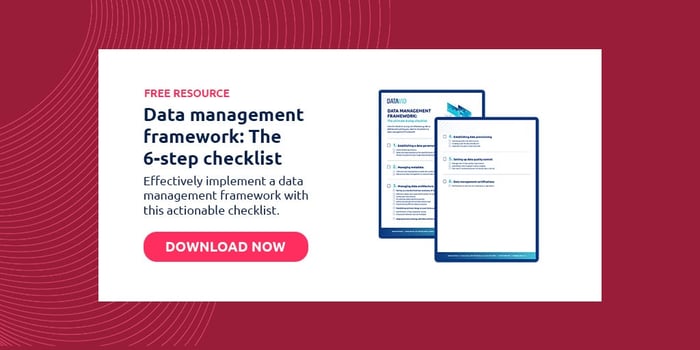2 minute read
How data management innovation drives GRC and business success
Data management innovation is key to sustainable GRC frameworks in a strict compliance environment. Learn how it drives success.
Table of contents
With a harsh compliance environment, companies across regulated industries need Governance, Risk and Compliance (GRC) solutions that have an integrated data management framework at their heart.
Today, it is important to integrate structured and unstructured data from internal and external sources. The main benefits of such an approach are:
- Enhanced strategic business decisions in response to market risks and opportunities;
- Efficient monitoring of the changing regulatory landscape;
- Lower cost of compliance;
- Accelerated speed of compliance;
- Avoidance of fines, penalties and reputational damage, and;
- A 360-view of risk.
Old systems don’t meet essential GRC criteria
Data stored in legacy systems spread across departments and locations creates a complicated environment for IT and Compliance professionals to operate in.
This data may include new customer background information, contracts, communication logs, and more.
In addition, content from social media, instant messaging, forum usage and unstructured data from other sources needs to be taken into account as well.
If all this data remains dispersed the time needed to analyse it and bring it into one record is exponentially higher than working from a single integrated source of information. This is the type of solutions that Datavid provides to our customers.
For example, a solution architecture that incorporates all types of data stored across systems enables financial institutions to obtain a 360-view of their data relating to risk, customers and trades. It also facilitates e-discovery.
Accelerating on the innovation path
Another advantage of an integrated data management approach is that the technology can be re-used. – It was explained some time ago by MIT’s Sloan Center for Information Systems Research quoted in the Wall Street Journal.
They found that firms that “share business technology across units and departments grow faster and have lower costs than rivals that don’t do it as much.
By taking advantage of what they already do well, these firms can devote more energy to real innovations.” This presents a business opportunity.
Despite technological advancements, many large enterprises still struggle with the workflow processes and the IT infrastructure behind the “currency” of their business – documents.
To manage these documents one requires systems that allow for storage of rich indexes. The costs can be astronomical, and can stop “must do now” initiatives.
Most Enterprise Content Management (ECM) systems charge a hefty per seat fee. As user activities increase, the number of users rises, and so does the cost.
Besides costs, the other challenge is “content chaos” described in the research paper of the International Association for Information Management.
Their report on Enterprise Content Management uncovered content chaos as a key driver for consumer businesses.
50% of all respondents described their management of instant messages as “chaotic,” 31% felt the same about emails, and 28% for Office documents.
In essence, intelligent data management, integrated frameworks and next generation business applications are needed both to respond to GRC challenges and to accelerate on the innovation path.
Frequently Asked Questions
Why is data management important?
Data management is crucial for informed decision-making, data quality, compliance, efficiency, data integration, scalability, and leveraging data-driven technologies. It ensures reliable data, regulatory compliance, operational efficiency, and enables organisations to make strategic use of their data.
What is risk management and what is the relationship to GRC?
Risk management involves identifying and mitigating potential risks. GRC (Governance, Risk, and Compliance) is a framework that combines risk management, governance, and compliance activities to ensure organisational compliance and effective decision-making.
What is an example of data management?
One example of data management is establishing a centralised data repository or data warehouse where all relevant data from various sources is collected, organised, and stored in a structured and accessible manner.


.png)

